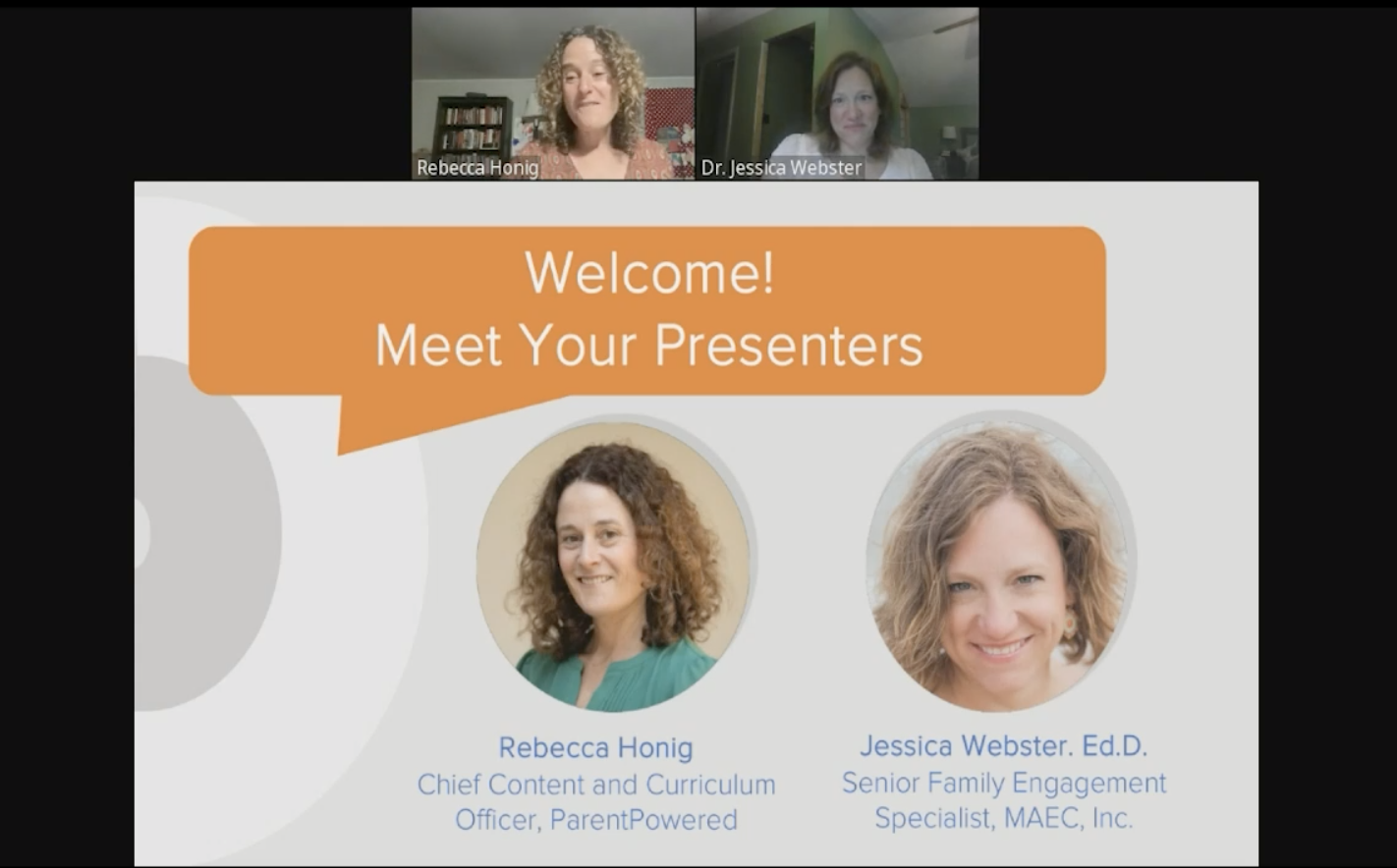Common Assumptions and Lessons Learned for Family Engagement
Watch the Recording Listen to the Podcast
Developing good educator-family relationships seems like a daunting task. After all, teachers can have anywhere from 25-75 students across their classes, and the ratio for guidance counselors and administrators could be as high as 500:1. But engaging families and creating true partnerships with them results in better outcomes for everyone.
During the edLeader Panel “Family Engagement: Assumptions Made, Lessons Learned,” Jessica Webster, Ed.D., Senior Family Engagement Specialist at MAEC, Inc., and Rebecca Honig, Chief Content and Curriculum Officer at ParentPowered, shared common missteps when engaging families and approaches that yield results.
Assumption: Families will contact you when they have a problem or question.
The reality is, often, the people who are the most vocal are the ones who already feel empowered—and they don’t always represent the majority opinion.
When soliciting feedback, look for patterns and gaps in the data to see who isn’t responding and find ways to reach out to them. This could include personal phone calls, focus groups outside of school hours, and working with local community support organizations to get feedback. Integrate effective systems of feedback within your communication plan so that you are soliciting feedback from all groups on a regular basis.
Assumption: Families have a good understanding of how your school works.
This is often not the case. Depending on a family’s background, they will have different needs as they progress through the school system. Instead of assuming what they know and need to know, ask them at every opportunity what their hopes and expectations are.
Consider that all families need some orientation about your school in order to engage. Create a program, peppered with tips and tricks even for families who know it all, that highlights key aspects for each grade level as well as general school information.
For new families, especially immigrant ones, education may have looked completely different where they come from. Engaging with local cultural agencies can help you understand the new families’ viewpoints. For example, some families may come from communities with single-gender classrooms.
Assumption: Families will be on the same page as teachers and understand teachers’ goals for their children.
In reality, families might not understand what resources the school has, and teachers might not have a clear understanding of family expectations.
Having families from diverse backgrounds can also mean they have different ideas about what the school will do for their children and how that will be accomplished. As with other assumptions, communication is key.
Educators should work with each family to find out their children’s strengths and challenges and what the family’s hopes are for their children. In turn, educators need to communicate with parents about how their classroom works, what they can do for the students, and how to access more resources from the school or community.
Finally, school leaders need to support the teachers and make sure they have the skills and tools they need.
Assumption: Families have positive views of teachers and schools.
Actually, some family members may have a negative view of their own educational experiences that color how they view your school. Others may have misperceptions of your school based on misunderstandings.
If families don’t feel valued by schools, they won’t engage. As you get to know families, let them tell you about their educational experiences. Take a trauma-sensitive approach to family engagement that helps you avoid triggers and practice strength-based communication.
In addition, when families have negative views of the school, have deeper conversations to understand why. There may be a real issue, or there could be a misunderstanding (e.g., the teacher seems cold and distant because the parent always tries to talk to them during drop off, which is a very busy time for the teacher).
Overall, educators should remember that sharing can make a family feel vulnerable. Meet every communication with empathy, and let them know the impact of their sharing. Make actions from focus groups and advisory boards visible, and communicate individually with families about their children.
Most important, build time into the calendar for educators and administrators to nurture family relationships so that engagement becomes ingrained in your school culture.
Learn more about this edWeb broadcast, Family Engagement: Assumptions Made, Lessons Learned, sponsored by ParentPowered, creator of Ready4K
Watch the Recording Listen to the Podcast
Join the Community
Community & Family Engagement is a free professional learning community where district and school administrators, teachers, counselors, support staff, and all educators can connect and share ideas, practices, and resources to support students and families and engage the community in helping students learn and thrive.
Research shows that families play a powerful role in fostering children’s development. ParentPowered is on a mission to help K–12 districts provide accessible, evidence-based family engagement curriculum, without adding more to teachers’ plates. Our Ready4K program — for PreK through grade 8 — supports, inspires, and activates parents and caregivers with simple, strengths-based insights they can turn into everyday teachable moments. Learn more and request a demo at ready4k.com.
Blog post by Stacey Pusey, based on this edLeader Panel.






Comments are closed.